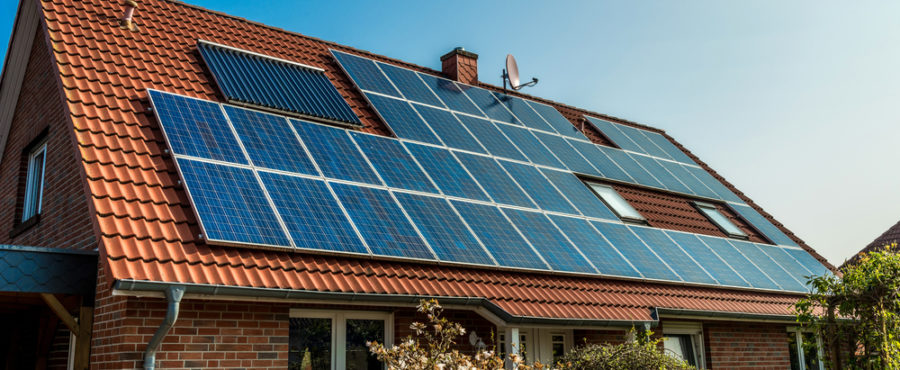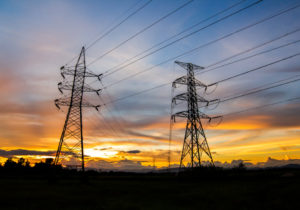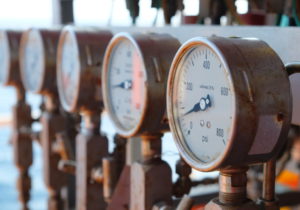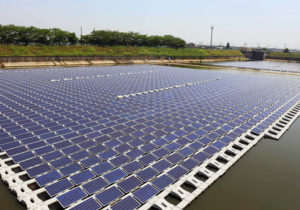
Have you been looking for a way to cut your electricity bill and help the environment while you’re doing it? If you have, then you’ve probably been looking at solar panels. However, unless you have a big backyard to suitably fit a ground-mounted system, you’re looking at installing solar panels on your roof. So what is the best roof for solar panels? Do you have the perfect roof for a solar panel system?
The simple answer to that is: no. No one has the perfect roof for a solar panel system. It’s rare if a roof is. Since converting solar energy for residential use is still relatively new, homebuilders and contractors are still building roofs the same way they have been for years and changing designs comes slow.
As more rooftop systems are installed, the way roofs are built will probably change to better suit them (especially since California is requiring all new construction to use solar panels by 2020). For now, there are a few factors that should be addressed before moving forward with the installation.
Factors to Consider Before Installing Solar:
- Orientation
- Pitch
- Age
- Size
- Material
- Shade
- Orientation
Orientation
The orientation of your roof is important. In North America, south facing roofs (180 degrees) are ideal as they generate the most energy throughout the day. A roof that is facing west/east will generate more energy in the mid-afternoon, but there is an overall reduction of power generation by 10-20%.
Despite the reduction of power generation, there has been some discussion on if west-facing roofs are better than south-facing roofs in the long run. While south-facing panels do generate the most energy throughout the entire day, west-facing roofs generate the most in the mid-afternoon – when average energy demand is at it’s highest.
If you have a west-facing roof, it’s not a deal-breaker in the installation though. Just understand that your peak hours of power generation will start around 2 pm instead of 12 pm with south-facing panels. If you want to take advantage of both south and west, you can install panels facing in both directions and get the most of your power generation.
Size
As with orientation, the size of your roof will tell you how many panels you can install. The average U.S. solar system is 5 kilowatts or 20, 250 watt solar panels. Each panel measures 15 square feet, so you’ll need 300 square feet of roof space in order to correctly install a system.
Pitch
The slope of your roof doesn’t so much affect how much energy the panels are able to generate, but more if you’re going to need extra hardware or how safe the installation process will be. Ideally, your roof should have a slope of 30-degrees.
If your roof has a steep slope, it will make installation harder and more dangerous. If your roof is flatter, you may have to purchase hardware that will angle the panels, which will increase the cost of installation.
Age
Most solar panel systems have a 20-25 year warranty, the same as a most roofs. The problem some people come across, however, is after they install their rooftop systems, they realize their roof needs to be redone in a few short years.
Before you go forward with the installation process, check to see how old your roof is. If your roof is more than five years old, then you may want to consider getting your roof redone before installing solar panels. If you wait, the cost of getting your roof redone will cost more because the crew will have to uninstall the panel system and reinstall it when it the job is done. Get everything done ahead of time, you can save time and money.
Shade
This may go without saying, but if your house is in a shady spot, then solar panels won’t be able to do their job. You may not have this problem if you live in a desert region, like Arizona, but in places like the South where oak and magnolia trees grow tall and wide, this is a serious consideration.
There are two solutions you can consider:
- Carefully take a chainsaw to a few branches, which if you live in the South, this might be a good idea anyhow with hurricane season coming up. Alternatively, hire a professional tree trimming service to handle this for you.
- Find a community solar energy project to buy clean energy from.
Roof Materials
Roofing materials are the last piece of criteria on the solar panel checklist. Solar panels can be mounted on pretty much any rooftop despite what it’s made from, but the type of material will determine how much labor will cost to install it.
The Best Roof Types For Solar Panels:
- Composite Roofing
- Metal Shingles
- Tiled Roofing
- Tar and Gravel Roofing
- Wood Shingled
Composite Roofing
Composite roofing is the most common type of roofing used on houses, making it relatively easy for a crew to install a solar panel system. Composite or asphalt shingles are used in this material and made from a fiberglass or cellulose type of mat. The flexibility and durability of these shingles make it one of the best for solar panels.
Metal Shingles
Metal roofing with standing seams is another material that’s great for solar panels. The standing seams make it easy to install the panels and no drilling is required to attach them which cuts the cost of labor quite a bit. Furthermore, metal shingles will reflect the sun where it doesn’t hit the solar panels, keeping the house cooler.
Tiles
Tile roofing is another common material used and it can be made from different ingredients. Determining what material the tile is made from will determine how expensive the labor will be. For example, attaching hardware to clay tiles may be more expensive than attaching them to concrete.
Tar and Gravel
Tar and gravel are commonly used for flat roofs. While it’s not hard to install a panel system to a tar and gravel roof, remember that the pitch of the solar panels has to be at 30-degrees. Installing panels on a flat roof will require extra hardware to angle them where they need to be, which will add money to the final bill. However, if you’re leasing the panels, this adds a minimal cost to your monthly lease.
Wood Shingles
While wood shingles are common in some neighborhoods, installing a solar panel system on them is not recommended because of the fire hazard. In fact, some jurisdictions won’t let you install a solar system on a wood-shingled roof and some companies won’t take on such projects even if jurisdictions allow it.
Consider re-roofing to a more viable material, such as composite or metal standing seams. Or you can look to see if there is a community solar project as described above.
To Wrap it Up
Right now, there really is no „perfect roof” to install a solar panel system. When looking to install a rooftop solar system, inspect the viability of your roof for:
Orientation: A south-facing roof is ideal, but you can install a system with a west-facing roof or have a mix of both.
Size: Whether you have a south or west-facing roof, you will need at least 300 square feet to install the right number of panels.
Pitch: Ideal roof slope is 30-degrees. A steep slope may make installation more difficult while a flatter roof will need extra hardware.
Age: Check the age of your roof. If it’s older than five years, consider getting it re-done before installing your system.
Shade: Having lots of trees will reduce the output of the panels. Consider cutting back some branches or hiring a professional tree trimming service.
Materials: Composite and metal standing seam shingles work best for easy installation. Wood shingles are not recommended and most companies won’t install on wood-shingled roofs.
Source: SunPower




